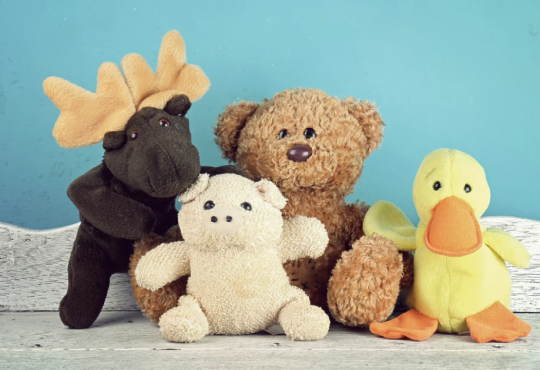AI-powered smart toys have revolutionized the way children learn and play, blending cutting-edge technology with traditional playtime to create personalized and engaging educational experiences. In 2025, these toys are more advanced than ever, adapting to a child’s learning pace, preferences, and developmental needs. This article explores the evolution, benefits, and future potential of AI-powered smart toys, highlighting how they are shaping the next generation of learning tools.
The Evolution of AI-Powered Smart Toys
The journey of AI-powered toys began with simple interactive features, such as sound chips and basic voice recognition. Over the years, advancements in artificial intelligence, machine learning, and IoT (Internet of Things) have transformed these toys into sophisticated learning companions. Early milestones included programmable robots and interactive dolls, but today’s smart toys go far beyond, offering real-time adaptability and personalized interactions.
In 2025, AI-powered toys will have features like facial recognition, voice analysis, and activity tracking. These capabilities allow toys to understand a child’s emotions, interests, and skill levels, tailoring their responses and activities accordingly. For example, an AI-powered robot might adjust its difficulty level in a math game based on the child’s performance, ensuring a balance between challenge and encouragement.
Benefits of AI-Powered Smart Toys
- Personalized Learning: AI-powered toys adapt to each child’s unique learning style, pace, and preferences. By analyzing data from interactions, these toys can identify areas where a child excels or struggles, providing targeted support. This personalized approach fosters a deeper understanding of concepts and keeps children engaged in the learning process.
- Enhanced Engagement: Unlike traditional toys, AI-powered smart toys offer dynamic and interactive experiences that captivate children’s attention. Features like voice recognition, storytelling, and gamified learning make education enjoyable, encouraging children to explore and experiment.
- Skill Development: These toys are designed to promote a wide range of skills, from critical thinking and problem-solving to creativity and emotional intelligence. For instance, coding robots teach programming basics, while conversational AI toys help children develop communication skills.
- Parental Insights: Many AI-powered toys come with companion apps that provide parents with insights into their child’s progress and preferences. This data helps parents understand their child’s strengths and areas for improvement, enabling them to support their learning journey effectively.
- Inclusivity and Accessibility: AI-powered toys are increasingly designed to cater to children with diverse needs, including those with learning disabilities. By offering customizable features and adaptive content, these toys ensure that every child can benefit from engaging and effective learning experiences.
The Hottest AI-Powered Smart Toys of 2025
AI-powered smart toys are revolutionizing playtime, combining entertainment with hands-on learning. Here’s a look at some of the most exciting AI-driven toys this year, along with their pros and cons.
1. LEGO Mindstorms Robot Inventor
The LEGO Mindstorms Robot Inventor kit allows kids to build and program their own robots using drag-and-drop coding and Python. It fosters problem-solving and creativity through hands-on engineering challenges. The kit includes motors, sensors, and over 900 LEGO pieces for endless customization. However, it has a steep learning curve for beginners, and the high price tag may deter some buyers.
2. Roybi Robot
Roybi Robot is an AI-powered educational companion that adapts to a child’s learning pace, focusing on language development and STEM subjects. With interactive lessons and real-time feedback, it personalizes education like never before. Parents appreciate its engaging and speech-enhancing features. However, its effectiveness depends on consistent use and lacks physical interactivity beyond conversation.
3. Thames & Kosmos KAI Robot
The KAI Robot is a buildable AI robot that teaches kids advanced computing concepts, including machine learning and programming. Its modular design encourages critical thinking and problem-solving through real-world coding challenges. The hands-on approach makes learning fun, but younger children may struggle with the complex concepts, and setup requires patience.
4. CogniToys Dino AI
This smart dinosaur uses AI and voice recognition to engage children in interactive storytelling and learning. It personalizes responses based on the child’s interests, making education more engaging. With its friendly design and conversational AI, kids enjoy a unique learning experience. However, it requires an internet connection for full functionality, and its voice recognition can sometimes misinterpret commands.
5. WowWee MiP Robot
The WowWee MiP Robot is a self-balancing AI-powered toy that interacts with kids through gestures and app-based controls. It offers fun games, dance moves, and obstacle avoidance features. Its dynamic personality and responsiveness make it a favorite among kids. However, its battery life is limited, and the app is necessary to unlock its full potential.
6. Mattel’s Pictionary Vs. AI
This AI-enhanced version of Pictionary brings a futuristic twist to the classic drawing game by having AI recognize and score drawings. It encourages creativity while keeping gameplay fair and competitive. Families enjoy the interactive and tech-driven approach. However, AI accuracy can be inconsistent, leading to occasional misjudged drawings.
7. Spin Master Boxer AI
Boxer is a tiny but energetic AI-powered robot that responds to voice commands, gestures, and touch. It features a playful personality and various interactive games, making it a delightful companion. Its compact size makes it easy to carry around, but its limited range of responses may lead to repetitive interactions over time.
8. VTech KidiZoom Smartwatch DX3
This kid-friendly smartwatch blends AI features with fitness tracking, games, and educational tools. It encourages active play while offering basic photography and messaging capabilities. With a durable design, it’s great for young users. However, its AI functions are limited compared to smartphones, and parents may need to monitor screen time.
9. Bandai Namco AI Gundam Models
AI Gundam models take traditional model-building to the next level by integrating smart features like voice interactions and battle simulations. They appeal to anime fans who love both construction and technology. The models offer an immersive experience but require additional accessories for full functionality, and their higher cost may be a drawback.
10. LeapFrog LeapBuilders AI Blocks
These AI-enhanced blocks introduce toddlers to early learning concepts like numbers, letters, and colors. They provide interactive feedback to encourage problem-solving and early STEM development. Parents love the educational aspect, but the toy has limited long-term engagement as children outgrow its basic lessons.
Challenges and Ethical Considerations
While AI-powered smart toys offer numerous benefits, they raise important ethical and practical concerns.
- Data Privacy: AI-powered toys collect and process significant amounts of data about children, including their preferences, interactions, and sometimes even voice recordings. This raises critical concerns about how this sensitive information is stored, used, and protected. Companies must implement robust data security protocols and comply with stringent privacy regulations to ensure that children’s data remains confidential.
- Screen Time and Dependency: The engaging nature of AI toys can lead to over-reliance on screen-based interactions, potentially reducing a child’s engagement in physical activities and social play. Prolonged use may hinder the development of interpersonal skills or lead to unhealthy habits. It’s essential for parents and educators to monitor screen time and encourage a balance between tech-driven play and more traditional, imaginative activities.
- Affordability and Accessibility: Advanced AI technology often comes with a steep price, making these toys unattainable for many families. This creates a digital divide where only a portion of children can access the benefits of such innovative toys. Efforts to produce cost-effective models or provide subsidies could help bridge the gap and ensure inclusivity across different socioeconomic groups.
- Ethical AI Design: The programming behind these toys needs to reflect ethical responsibility, particularly when teaching values or guiding behavior. Developers must ensure AI interactions are free from biases and promote positive learning, inclusivity, and diversity. Ethical considerations should also extend to the avoidance of reinforcing harmful stereotypes, ensuring the toys are universally beneficial.
The Future of AI-Powered Smart Toys
The future of AI-powered toys is incredibly promising, with ongoing technological advancements paving the way for even more innovative solutions.
- Integration with Wearable Tech: AI-powered toys of the future may seamlessly integrate with wearable devices to provide a more personalized and interactive experience. By monitoring metrics such as physical activity, sleep patterns, and emotional well-being, these toys could adapt their functionality to suit each child’s needs. For instance, a toy might encourage active play if it detects low physical activity or offers comforting interactions during moments of stress. While this holistic approach could revolutionize child development, it raises questions about data security and the ethical implications of constant monitoring.
- Collaborative Learning: Future AI toys are poised to revolutionize how children learn together by facilitating group interactions and teamwork. Interactive board games and toys with AI capabilities could adjust challenges based on players’ skill levels, creating an inclusive and engaging experience for all. This not only promotes collaboration but also helps children develop social and communication skills. However, ensuring the AI’s fairness and avoiding over-reliance on technology in group dynamics will be key to maximizing these benefits.
- Sustainability: In response to growing environmental concerns, manufacturers are embracing eco-friendly practices in toy production. From solar-powered mechanisms to biodegradable materials, sustainability is becoming a cornerstone of innovation. These toys aim to combine cutting-edge technology with environmentally conscious design, reducing their ecological footprint. While sustainable options are promising, their cost and availability might present challenges in making them mainstream.
- Global Accessibility: Efforts to make AI-powered toys affordable and accessible are critical to bridging the digital divide. Manufacturers and non-profit organizations are exploring partnerships to bring these innovative products to underserved communities. For example, distributing AI toys through schools or educational programs could help expand their reach. However, ensuring equal access worldwide and addressing language or cultural barriers in toy design remain important priorities.
- Advanced Emotional Intelligence: Future AI toys may feature enhanced emotional intelligence, enabling them to recognize and respond to nuanced emotions more effectively. Such advancements could help support children’s emotional growth by offering positive reinforcement, empathy, and conflict resolution guidance. For instance, toys might provide calming interactions during anxious moments or encourage confidence-building activities. While this development is exciting, ensuring such toys encourage authentic relationships rather than replacing human connections will be vital.
The Transformative Role of AI-Powered Toys
AI-powered smart toys represent a groundbreaking fusion of technology and play, offering personalized educational experiences that cater to each child’s unique needs. As these toys continue to evolve, they hold the potential to transform learning, making it more engaging, inclusive, and effective. However, addressing challenges like data privacy, affordability, and ethical design will be crucial to ensuring that these innovations benefit all children.
In 2025 and beyond, AI-powered smart toys are set to redefine the landscape of education and play, empowering the next generation to learn, grow, and thrive in an increasingly digital world.





